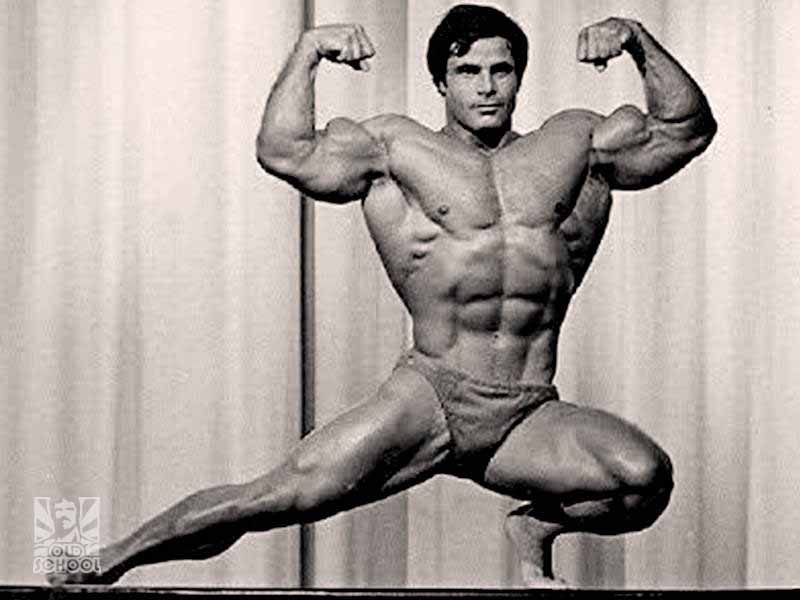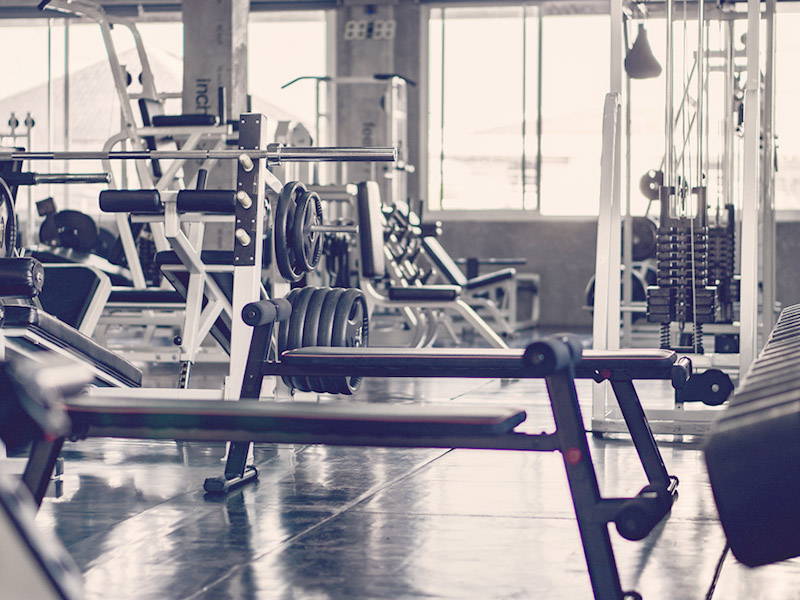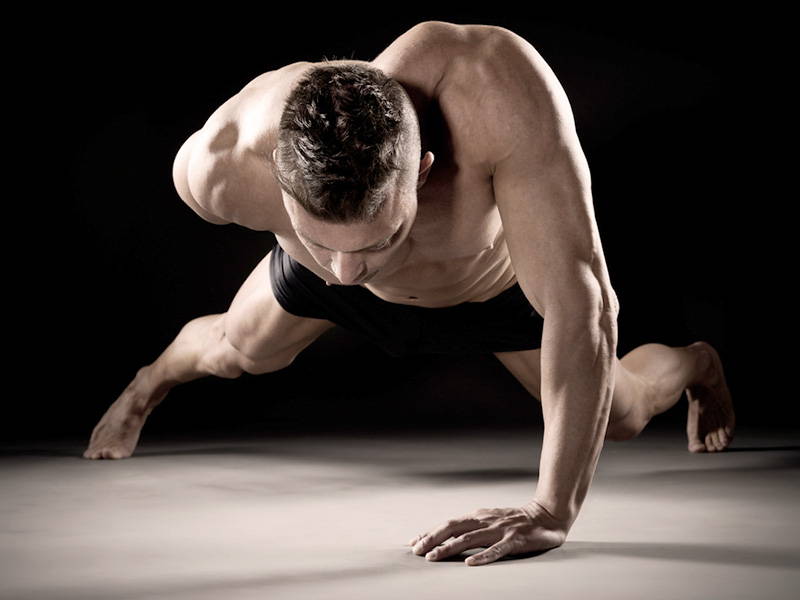
How to Bench Press: The Step-by-Step Guide
Key Takeaways
- The bench press has been around as long as free weights have. It is popular with lifters of all fitness and skill levels, and is also part of the Big Three exercises in powerlifting.
- If you’re a beginner just getting started with the bench press, work with a trainer or experienced lifter to learn perfect form and useful tips.
- Once you’ve got your form and strength, you can create an at-home setup if you’d rather work out there.
- The bench press is a great exercise to help build up strength in your upper-body, especially your chest and arms.
- This step-by-step guide will help you increase your 1RM and avoid plateaus as you advance your lifting skills.
Have you looked in the mirror lately and wished you had more defined pecs? Maybe your shoulders could use some filling out?
One of the best ways you can do this is by performing the bench press. This specific exercise is one of the oldest bodybuilding lifts you can do with free weights. Bodybuilders of the Golden Era used this staple as part of the foundation for their muscular physiques.

If you’ve been wanting to learn how to bench press but aren’t sure how, keep reading. We’ll give you a step-by-step guide on how to perform the bench press correctly.
First, you’ll learn about the muscles that are worked when doing the bench press. Then, we discuss the benefits you’ll gain from doing this exercise.
After that, we’ll give you the lowdown on proper body position before you ever pick up the bar. Finally, you’ll get the step-by-step guide on proper form from the beginning to the end.
As a bonus, we’ll give you some expert tips on how to make the most out of your chest day at the gym.
Muscles Worked When Performing the Bench Press

When you are doing the bench press exercise, here are the muscles you are working:
- Triceps
- Biceps
- Pectoralis major
- Anterior deltoids
- Serratus anterior
- Traps
- Upper back
The pecs, triceps, biceps, and shoulders will get the most work. The serratus anterior will get stronger, which helps strengthen the core and aids in twisting motions. The traps and upper back will get a secondary workout during the lifting process.
Grip width and elbow placement play a role in how the muscles are activated. We’ll get into how you can target certain parts of the muscle groups in a later section.
Before we get into body position, let’s talk about equipment needed and benefits from performing the bench press.
Equipment Needed
If you have the right setup at home, you can perform the bench press without going to the gym. However, if you are just starting out, you need to have a spotter with you until you perfect the lift.

Here is the equipment you’ll need:
- Weight bench (bonus if it declines and inclines)
- Bar
- Bumper plates of various sizes
- Weight clips to hold the weights in place
That’s really all you need. You can also perform the bench press using a set of dumbbells. We suggest starting out with the barbell first to make sure you’ve got the form down first.
If you’re interested in doing this at home but don’t have the right equipment, consider buying a used set.
By now, some people may have given up on their New Year’s resolutions. Check out the classifieds on social media or Craigslist, you might just get lucky and find a bench press for sale.

If you prefer to go to the gym, they should have all the options available for the bench press, including machines. Don’t discount using a machine to perform the bench press, they can help:
- People with certain limitations
- Those looking to lift more weight
- Someone who doesn’t have a spotter available
The Smith machine, for example, is a great way to reduce the risk of injury without using a spotter. The barbell sits inside the rack of the machine which also includes a locking mechanism. You can set the lock to right above your head as a safeguard in case the barbell slips.
Bench Press Benefits
The bench press is not only a great upper-body exercise, it also helps build muscle endurance and stamina. Building up your strength doing the bench press will also improve your performance in other exercises.
Here are just a few that the bench press can improve:
- Push-ups
- Chin-ups
- Pull-ups
- Deadlifts
- Planks
- Overhead press
It’s also an exercise used by athletes, powerlifters, and general gym-goers. Hockey, football, and baseball are just a few of the sports that can benefit athletes using the bench press.

One study even suggests that athletes can get an edge by using the grip position they use in their sport. This study confirms that self-selected grip gives the best bench press performance. Here, researchers suggest a wide grip angle for heavier loads on a flat bench for athletes.
The bench press is not just for the young, it can also help the elderly as well. Weight-bearing exercises like the bench press can improve bone density. It can help reduce your risk of osteoporosis and potential bone fractures now and as you age.
When we get into proper form, you’ll notice that you explode into the upward phase of the bench press. This study suggests that there is greater muscle activation at higher reps (12 vs 6) with a shorter duration (3 seconds vs 6). Use the explosive nature of the bench press to improve your muscle gains quicker.
This is not a complete list of benefits from including the bench press as part of your routine. However, with this information, you can see it’s a valuable exercise to use in your upper-body routine.
Now, we’re almost ready to get into form when completing the bench press.
Body Position
First, let’s talk about body position before we get into the actual mechanics of performing the bench press.
Face
First, move around some to get yourself into the right position for the bench press. Regardless of how the rest of your body is positioned, you need to make sure your face is correct.

Lay down on the bench and look up at the bar. It should be between your mouth and forehead.
If you’re too low on the bench, you might not be able to safely lift the bar off the rack. If you’re too high, you’ll risk hitting the bar supports while you’re lifting.
Remember this position and always check that the bar is somewhere above your face before you begin the lift. If you change any other body position, always recheck this alignment before you move the barbell.
Torso
Your body will be in roughly the same position regardless of whether you’re doing the incline, flat or decline bench. Depending on your goals and weight involved, you may need to change up your stance.
If you’ve never done a bench press before, the body position may feel weird at first. What works for you might not work for others, so do some trial and error to know where you’re most comfortable.

Here’s how your torso should be placed on the bench:
- Shoulder blades: They should be back and together on the bench. Imagine you’re trying to hold a pencil with your shoulder blades. This will automatically push your chest out, which is what you want throughout your lifts. Some like their shoulder blades back and up while others prefer theirs back and down. Choose which works best for you. This stance is important because it reduces the risk of shoulder pain and rotator cuff injuries.
- Lower back: You want to have a slight arch to your lower back when performing the bench press. The amount of arch is up to you; powerlifters have a higher arch than bodybuilders and regular lifters. The goal of the arch is to help:
- Reduce your range of motion
- Lift heavier
- Push out the chest more
- Safeguard the shoulders from injury
- Hips: Use your hips to help move your lower back to create the arch you need. Brace your hands against the rack supports and move the hips to change the arch. Once you’re in the right position, lock your hips in place to stabilize your lifts.
Feet
Your foot position matters when learning how to bench press correctly. Having the ability to drive your lift with your feet flat on the floor is key to lifting heavy weights. If your feet are too far forward, they may slip on the floor which can negatively impact your lift.

The most common foot placement when completing the bench press is pulling them slightly back and out. Place your feet flat on the floor somewhere between your hips and knees. Position your toes outward with your feet out to the side as far as your hips will allow.
Powerlifters will usually pull their feet back farther and have them closer to their body. This creates a more defined arch and allows them to lift even heavier. However, stability is lacking with your weight on your toes rather than your entire foot.
Do you have short legs and have trouble putting your feet flat on the floor? Try pulling your legs up on the bench and place your feet flat on the bench instead.
Hands

When it comes to grabbing the bar, here are a few tips to keep in mind:
- Grab the bar low in your hand. This position helps protect your wrist from wanting to fall backward. You’ll reduce the risk of injury and it should also feel more comfortable this way when lifting.
- Squeeze the barbell. This will help with your wrist position and also activate your wrist, forearm, and tricep muscles. The stronger your grip on the bar, the more your muscles will activate up through your shoulder. Plus, there’s no risk of losing the bar if you have a superman grip on it.
- Start with just past shoulder-width apart. You can experiment with grip later, but to start out, go with this grip width. The farther out you go, the more you’ll activate the outer chest muscles. If you move inward, then you’ll work the inner chest muscles and triceps.
Once you’ve got the proper form down, try out the different grip widths to see how they work the muscles. You can also use different bench angles to help with targeting specific muscles.
Now, you’re ready to actually perform the bench press!
How to Perform the Perfect Bench Press
When you first start lifting, you may want to add weights immediately. If you’ve never done a bench press before, don’t be tempted to add weights to the bar! Yes, we mean it.
Start out perfecting your form first with just the bar and NO WEIGHTS! The bar itself weighs 45 pounds, so it’s not like it will be super lightweight.

Once you’ve got the form down, add weights at five pounds per set (2.5 pounds each side). Before you know it, you’ll be bench pressing more weight and seeing those muscle gains.
Step-by-Step Guide to the Bench Press
- Get your body into position and make sure you remain tight throughout your reps.
- Grab the bar just past shoulder-width apart. Unrack the bar and lift it until your elbows are locked and the bar is above your shoulders.
- Look straight up as you unlock your elbows and begin to lower the bar. Do this in a controlled motion. Continue to lower the bar until it’s just above your sternum (under the boobs for both men and women).
- With an explosive motion, lift the bar back up with a controlled motion, using your feet to drive it up. The bar should travel slightly backward to the starting position with the bar above your shoulders.
- Congratulations, you just completed one rep!
Do three sets of 8 – 10 reps with perfect form (as advised by your spotter or trainer). Once you’ve reached that goal, you’re free to slowly add weight to the bar. Don’t increase the weight until you can perform the same amount of reps and sets.
As for the rest periods, start out with one minute between each set. If you need more time, try not to do more than two minutes between sets. You’ll get better once you start lifting more and you’ll be able to take shorter rest periods. Ultimately, aim for less than a minute between sets.
Tips for Success
If you find that the barbell alone is too heavy, try the bench press with dumbbells instead. Start with the lowest weight and see how easy they are to lift.
As you move the bar up and down, be mindful of your elbow position. Keep them in, so you form an arrow with them instead of a T (if your head was the tip of the arrow). Your biceps should just about touch your sides when you are moving the bar, with elbows at a 45-degree angle.

Don’t bounce the bar off your chest when you’re lowering it. You want the bar to barely touch your shirt before you move back into the upward phase. Also, don’t cheat, make sure you lower the bar down and then all the way back up for a full repetition.
When you’re done with your set and want to re-rack the bar, move the bar back until it hits the upright of the rack. This is where a spotter will come in handy until you get used to this motion. Try not to let your eyes follow as it may cause you to move the bar too far back.
Bonus Tips for the Perfect Bench Press
As promised, here are some bonus tips that can help you get the most out of your bench press.
First, know that each bench is not one size fits all. You want to make sure that the bench is at least as wide as your shoulders are. If it’s not wide enough, you won’t have the stability you need to lift properly. If it’s too wide, then your arms won’t be able to go through the entire range of motion.
Another thing about your setup to consider. There are different bar thicknesses and flexion. As a beginner, a thicker bar will be more comfortable for you to hold.
You also don’t want a bar that’s too rigid. Just a bit of flex in the bar will help cushion the joints once you start adding on weight. If you’re at the gym, you may not have a choice but consider this if purchasing your own setup.

If you notice that one arm is stronger than the other (usually your dominant arm), focus on one-arm exercises.
Work the weaker arm more to even out your strength using dumbbells, kettlebells or a cable machine. Then you’ll be able to lift heavier and bust through any plateau on the bench press.
Remember, you’re not going for speed here, you’re going for perfection. Having the right form will help keep you safe when you start adding more weight to the bar. Rest as needed between sets and don’t give up.
Final Thoughts
The bench press is one of the best chest exercises you can do to activate your pectoral muscles. Perfecting the form will help you achieve heavier lifts down the road with the least risk of injury.
If you’re just starting out, have a trainer, spotter or use the Smith machine until your form is flawless. As you add weights, have a spotter there to help guide the bar back to the rack if needed. Avoiding injury is most important, even more than your gains.
Speaking of gains, Vintage Build™ can help get you there by giving you the muscle-building combo you need. Branched Chain Amino Acids (BCAAs), Creatine Monohydrate, and L-Glutamine all work together to build muscle and aid recovery.
Do you bench press? How long have you been at it and what’s your heaviest lift? Do you have any other tips to add that we didn’t mention? Let us know your thoughts in the comments below.












